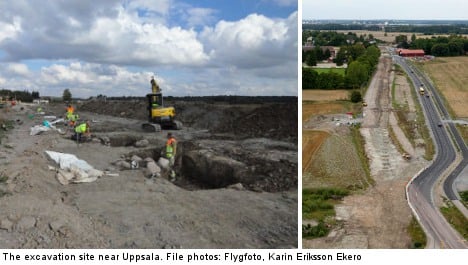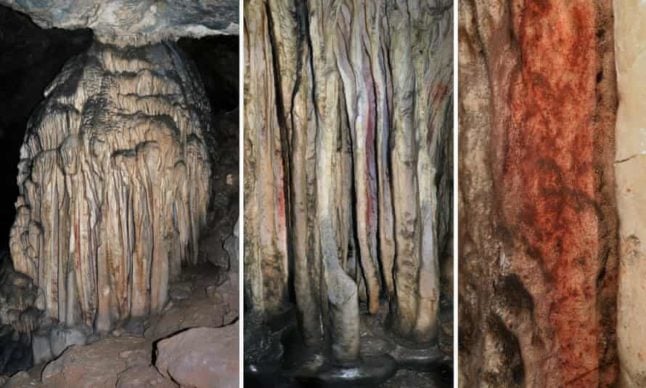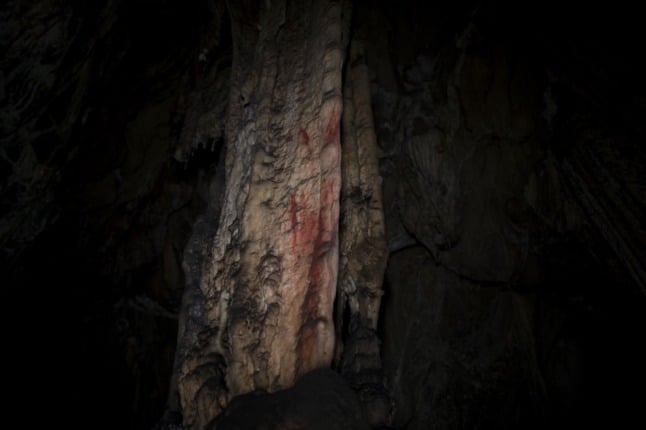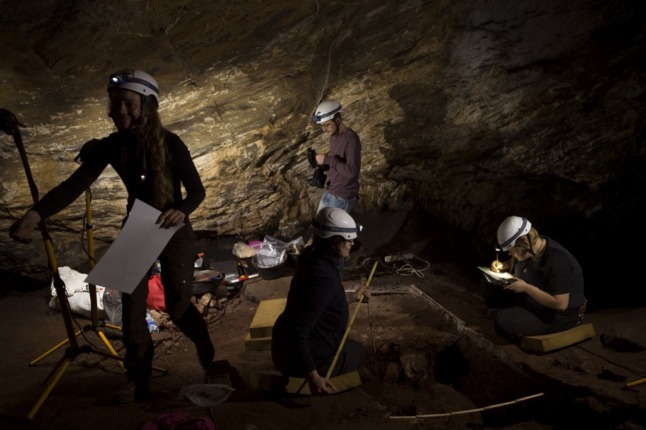“It’s exciting because we’ve never seen anything like it in these parts before,” Robin Lucas, archaeologist at Uppland Museum, told The Local.
The archaeologists, who were excavating the area in preparation for a new railroad line, discovered 144 post-holes two metres wide and a metre deep in a perfectly straight line spanning a kilometre in Old Uppsala. The post holes are placed precisely six metres from each other.
“It appears to be a processional road leading to Old Uppsala, which was the seat of the early Swedish kings,” Lucas said.
IN PICTURES: See the excavation site pictures from Uppsala
Using carbon dating, the team has determined the site dates back to the fifth century, pagan times before Christianity reached the area and even before the Viking era. Many of the holes are filled with massive stones, remains of pine posts, and even animal bones, which hint that the site may also have had religious significance.
“Gamla Uppsala is often linked to a golden pagan temple,” the excavation’s website reads, “consecrated to the gods Odin, Thor and Frey, with worship involving animals and humans sacrificed to the gods.”
“We know that Gamla Uppsala was the center of life in pre-Christian society,” project leader Lena Beronius-Jörepeland said in a statement. “We believe these posts were very high, maybe even eight or ten metres. They may have marked the road towards Gamla (Old) Uppsala.”
But who built the monument – and how they accomplished such a feat – is a mystery. Lucas said he suspected that the site was built as a display of power of a wealthy chieftain of the Svea tribe, but that it was hard to say anything more than that.
“The rulers of the time are really just mythological that far back,” Lucas told The Local. “This was before the birth of Sweden as a nation state, and before the Vikings. We have no written sources from that time. The first real written Swedish documents are runestones, which date from the tenth century.”
Lucas said that the road appears to have been built relatively quickly, and it was the first time that a hierarchy of power was obvious in that time period.
“It must have been a massive undertaking. It does say a bit about the influence of somebody who could order that such a thing be built.”
Lucas said that all the digging was done, and the actual site of the ancient road will be gone by next summer as the new East Coast Railway is built. But the team will keep studying the posts and other artifacts from the site to try to learn more about the period.
Gamla Uppsala is already known to archaeologists and historians for its royal burial mounds dating back to the seventh century.
Solveig Rundquist





 Please whitelist us to continue reading.
Please whitelist us to continue reading.
Member comments